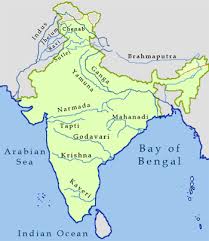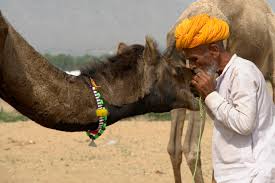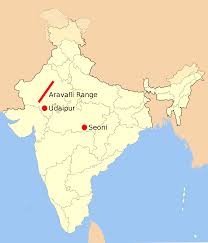10 people who are surprisingly Arab ❗ Despite the fact that individuals of Arab drop aren't regularly celebrated in the news, particularly with strains in the Middle East, ISIS, and the previous War on Terror, you may be shocked to realize that some of you. Araian Girl:Source-Wikimedia Despite the fact that individuals of Arab plunge aren't frequently celebrated in the news, particularly with strains in the Middle East, ISIS, and the previous War on Terror, you may be astounded to realize that a portion of your #1 performers have Arabic legacy. Whatever your generalizations and suppositions might be, a portion of these names may astonish you. It simply demonstrates that individuals are really difficult to classify and these stars are no special case. Here are a couple of stars whose predecessors or even guardians came from some place in the Middle East. Since they are not named Mohammed doesn't make their family any less authentic A large number of them have progen...
Shocking facts about India
Long ago, when giant lizards roamed the Earthand Netflix wasn’t around, the Asian continent got crashed into by an unexpected visitorthat ended up being a life-long neighbor. Uh, come again? Hey, I’m talking about India and its fascinatinghistory since its days as a massive piece of land floating in the ocean! Counting down from… 9. Advanced Surgery from Ancient TimesIf you think plastic surgery is a modern convenience, you’re up for a big surprise. India had it covered more than 2,500 yearsago, way back in the 6th century B.C.E.! Somewhere around that time, there lived anoutstanding doctor by the name of Sushruta. He’s called one of the founding fathersof surgery and for good reason: his Sushruta Samhita is a real gem of a book. It covers over 1,100 diseases, all kinds ofmedicinal plants, and dozens of surgical procedures. But what’s probably the most jaw-droppingthing about the book is that it also described surgical reconstruction of the nose! So basically, if you lived in ancient India,you could get yourself a nose job! Ok, maybe it wasn’t the rhinoplasty we knowtoday (with anesthesia and all), but that’s still impressive! 8. The First Diamond DealerUp until the early 18th century, India was the only source of diamonds in the world. According to the Gemological Institute ofAmerica, these precious stones were first discovered and traded in the 4th century B.C.E. Of course, industrial mining and diamond processingwas out of the question back then, so India only had a limited supply of them. That was okay, though, because the demandwas equally limited: only the wealthiest could afford such a luxury. Since then, countries like Russia, Botswana,and the Democratic Republic of Congo have taken the lead in diamond production. But the fact is, a country known for its loveof gold also had bragging rights for maintaining a diamond monopoly for almost a thousand years. Ooh, fancy! 7. One of the Earliest CivilizationsCivilized urban life as we know it dates back about 5,000 years in India. Well, fine, they didn’t have central heatingor anything (not that they needed it), but the Indus Valley Civilization was still amongthe most advanced out there in the ancient world. The Ancient History Encyclopedia says that,by 2600 B.C.E., dozens of towns and cities belonged to that civilization. And I must say, they had quite a comfy lifefor their time! Houses had bathrooms and wells, and everycity had a drainage system. Social conditions were also way better thanin other civilizations at the time. On top of that, the ancient Indians had aseriously mysterious writing system that scientists still can’t decipher to this day. Who knows what wonders these ancient textshide?... 6. A Civilization Ahead of Its TimeSpeaking of better social conditions, during the Vedic period, which lasted from about1500 to 500 B.C.E., the Indian society was probably the most equal in the known worldat that time. Although it was still patriarchal, women gota lot of respect, could become sages and seers, received an equal education with men, andenjoyed all kinds of rights. There was no such thing as arranged marriageback then — that only appeared much later. And political debates were rarely held withoutwomen giving speeches, and men were wise to listen to their words! (Hear that, fellas?) I guess you could call the Vedic period thegolden age of India’s history! 5. The Most Important NumberAnd what do you think that might be? We’d be in big trouble without this mostimportant number! Ok, enough riddles: I’m talking about zero! The concept of “zero” and the rules ofits use were first invented in India at around the 7th century C.E. Before that, the idea of “nothing” hadn’teven been treated as a number. It was no more than an empty space between“real” numbers. I suppose people just didn’t see the convenienceof it yet? Like every time I look at my bank accountafter I pay my bills. Yeah, “convenience”… 4. Clean HairHas the word “shampoo” ever struck you as odd? Say it out loud a few times, and you’llsee what I mean. Well, it might sound foreign to you becauseit probably is. Not unless you’re from India, and in thatcase, thanks for the word! Yes, “shampoo” is derived from the Hindiword “champo,” which means “to massage” or “knead.” And the first mention of this “head kneading”was by Greek historian Strabo back in the 4th century B.C.E. At the time, shampooing was only common toIndians: they massaged their heads with various herbs and extracts and then washed them offwith water to keep their hair clean. The practice of using shampoo didn’t cometo Europe until a thousand years later, in the early 19th century.
Looks like it took long enough to catch up! 3. Math and Astronomy GeniusIn ancient India, mathematics and astronomy had been two major disciplines since 1500B.C.E. or even earlier. But arguably one of India’s greatest mindslived in the 5th century C.E. His name was Aryabhata, and he wrote a treatiseon astronomy that became a foundation for many later studies. Despite using a geocentric model of the solarsystem, which showed the sun and moon revolving around the Earth, Aryabhata presented manyideas that are still used today. For example, he calculated the length of theyear almost to the minute, found the value of Pi, and explained that the moon and planetsshine because of sunlight reflecting off of them. Not bad for the 5th century! 2. The Guru of GamesDo you play chess? Even if you don’t, you know what it is. But did you know that its ancestor was bornin India too? The ancient game was called chaturanga, andit appeared at around the 6th century C.E. Nobody knows the exact rules of the game,but judging by its appearance, it’s safe to assume it had a lot in common with chessand similar games (like the Japanese “shogi,” for instance). Another classic board game is Snakes and Ladders. It’s not really known where and when itfirst appeared, but most say it comes from the 13th-century Indian game called Mokshapat. The idea was to teach kids about vice (inthe form of snakes) and virtue (the ladders). Hey, you up for a game? Oh, nevermind, I’ve got one more tidbitto share with you… 1. Humble Island BeginningsIndia wasn’t always a “subcontinent.” In the era of dinosaurs, over 100 millionyears ago, it was actually an island! It had broken off from a supercontinent andslowly but steadily traveled north, arriving to its present-day location in just about50 million years. The dinosaurs had already gone extinct bythen, though, so they didn’t get to see what happened next. The giant Indian Island collided with Asiain a colossal continental boom. The impact was so hard, in fact, that theHimalayas were formed almost in an instant! Yep, that’s how the youngest mountain chainin the world appeared
Actually, India, now a subcontinent, is stillslowly pressing northward, making Everest… grow! Basically, the highest peak on the planetis now a few millimeters (or even centimeters) taller than last year, which, come to thinkof it, makes it harder and harder for alpinists to get to the top! Uh-oh, better cross that one off your bucketlist sooner than later! Do you know any other shocking facts aboutIndia’s history? Let me know in the comments below! Don’t forget to give this video a “like,”share it with your friends, and click “subscribe” to stay on the Bright Side of life!




Comments